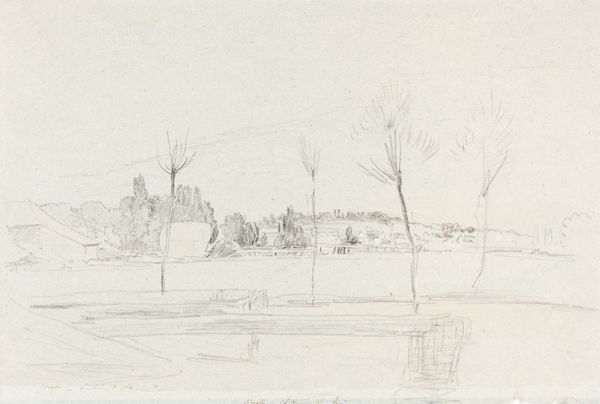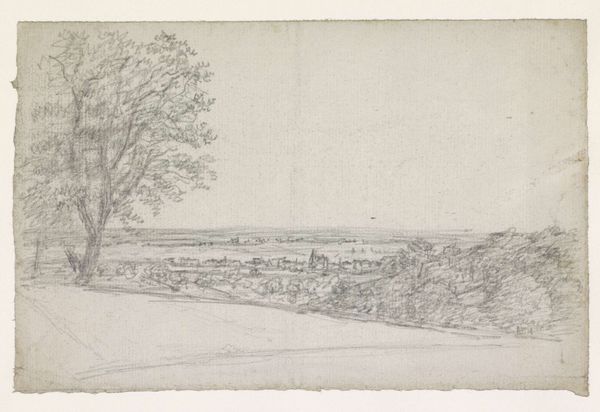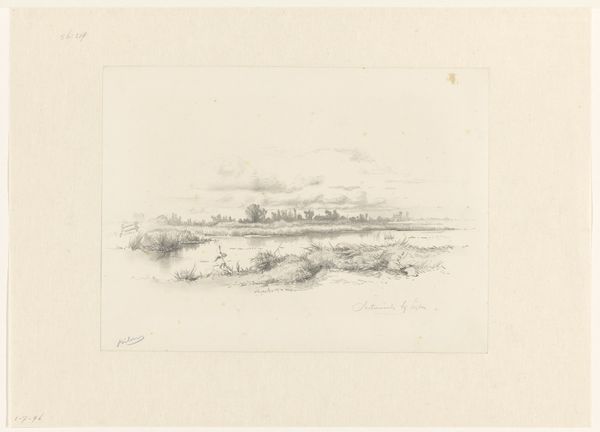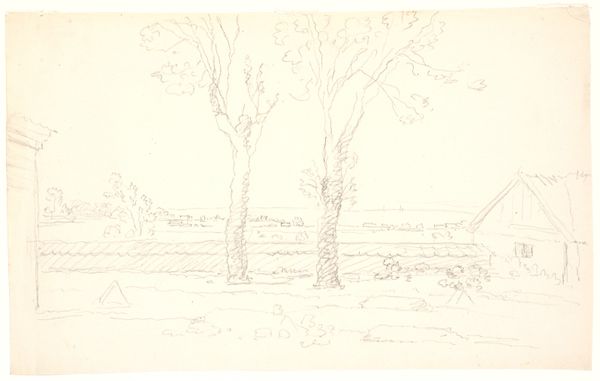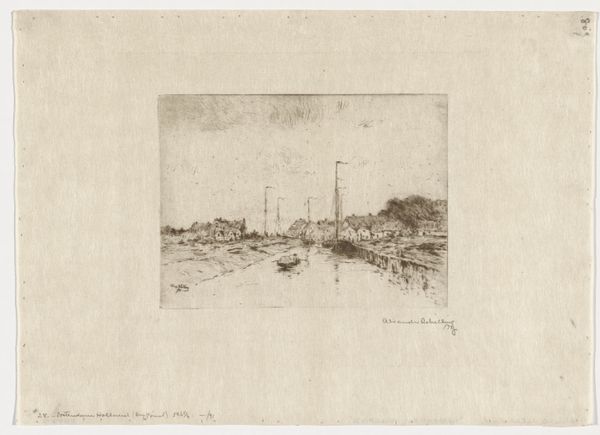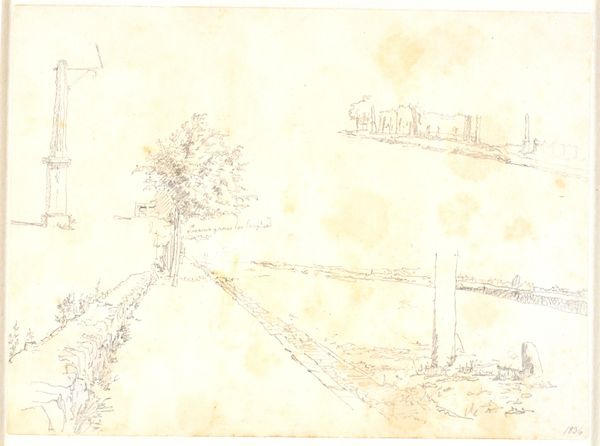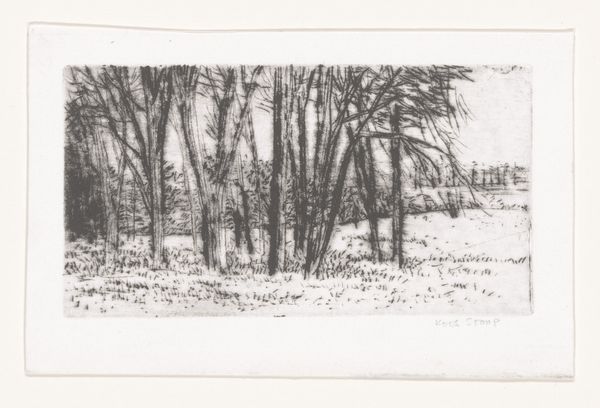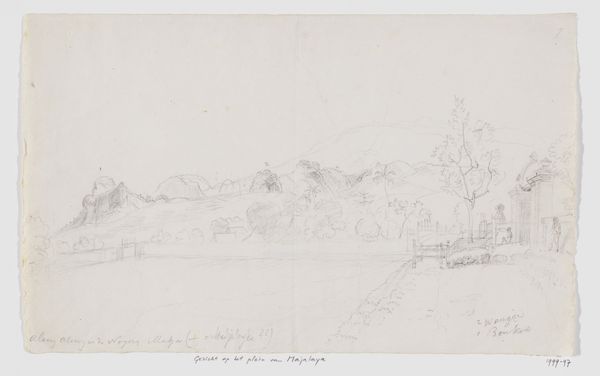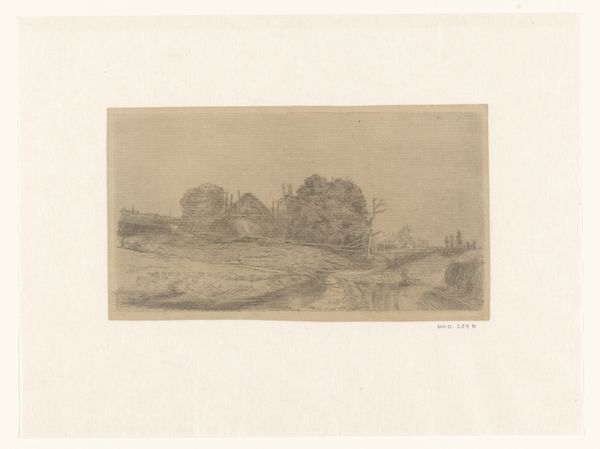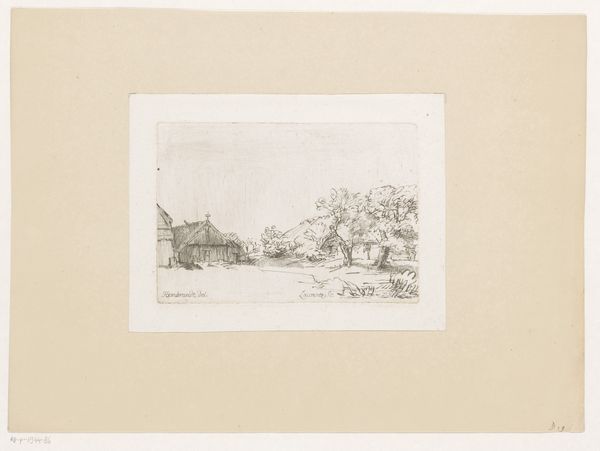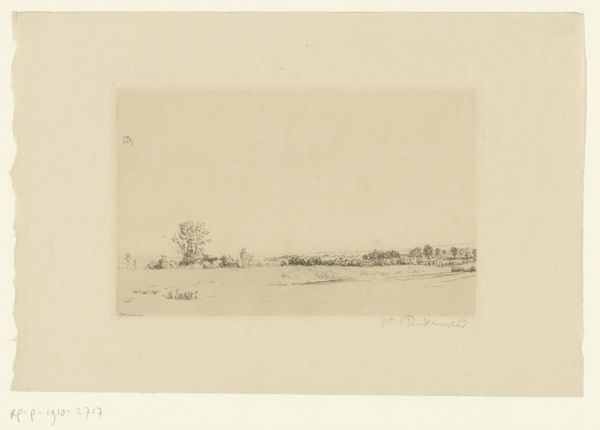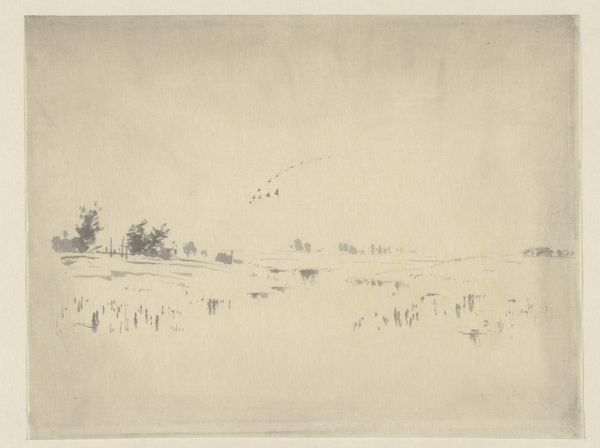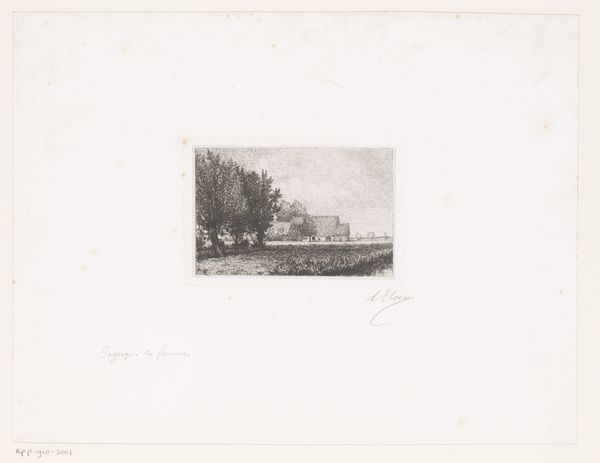
Dimensions: height 216 mm, width 322 mm
Copyright: Rijks Museum: Open Domain
Editor: Here we have Kees Stoop’s "Huizen in een landschap," or "Houses in a Landscape," created before 1969. It’s a pencil drawing currently residing at the Rijksmuseum. It has this delicate, almost dreamlike quality because of the sketch-like style. What formal elements stand out to you in this work? Curator: The immediate impression is one of understated elegance. Consider the composition: the careful distribution of tonal values, ranging from the faintest graphite whispers to denser, almost aggressively scribbled textures. How do you perceive the use of line in creating spatial depth? Editor: Well, the density of lines definitely seems to create depth, with the heavier marks in the foreground and lighter, sketchier lines further back, implying distance. It’s not photorealistic, but it gives a sense of space. Curator: Precisely. Observe the way Stoop employs hatching and cross-hatching not merely to delineate form but to generate a palpable sense of atmosphere. Do you notice any specific recurring shapes or motifs that contribute to the overall structure of the composition? Editor: I see a repetition of vertical lines, especially in the trees and suggesting building structures. It gives the piece a sense of order, despite the loose drawing style. Curator: A compelling observation. These verticals serve as structural pillars, grounding the ephemeral quality of the drawing. Furthermore, examine the negative space. How does its interaction with the drawn elements influence the viewer’s perception of form and volume? Editor: I see what you mean. The emptiness gives the structures more shape than if the whole image was filled in, it makes my eye fill in the missing details and gives them form. I see the importance of each stroke and it’s impact more than I did before. Curator: Precisely. By meticulously attending to the intrinsic formal elements of line, tone, and composition, we gain a richer understanding of Stoop's artistic intention. Editor: Definitely. This formalist perspective helps highlight aspects that might otherwise go unnoticed, changing my interpretation of the piece and revealing Stoop’s intention to define structure and space.
Comments
No comments
Be the first to comment and join the conversation on the ultimate creative platform.
